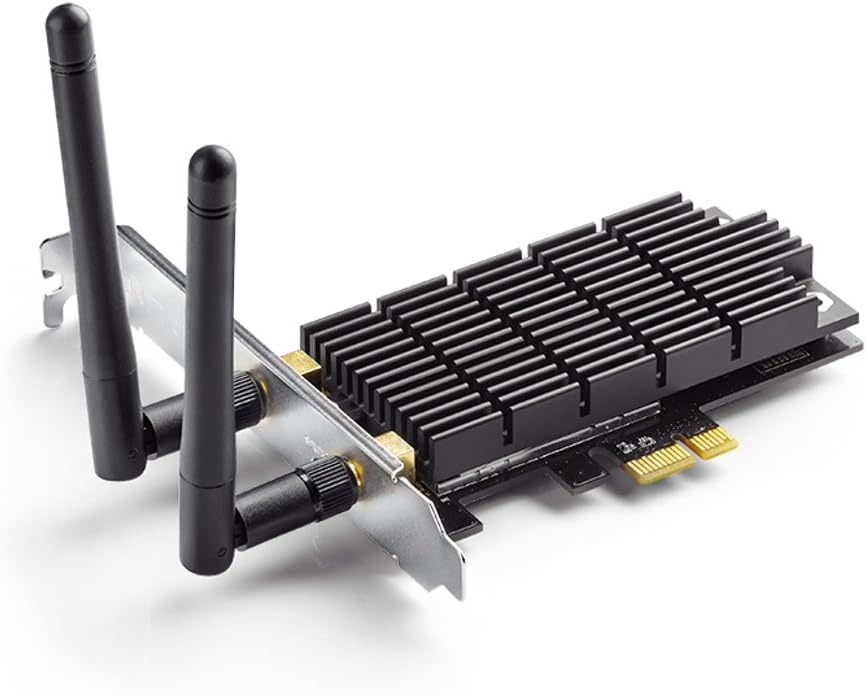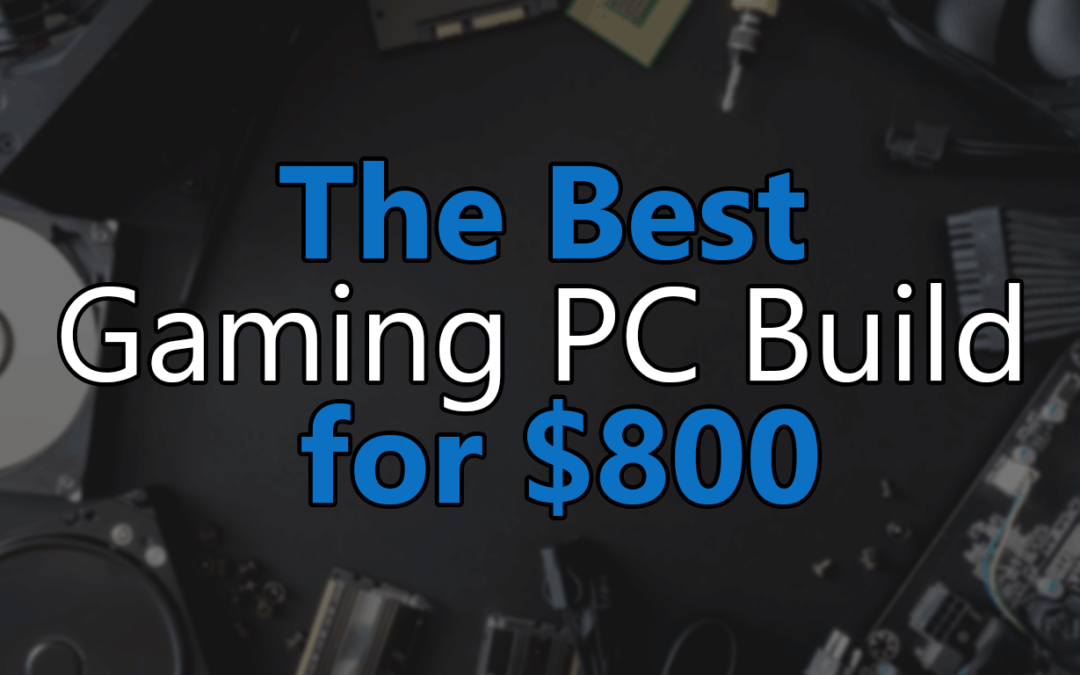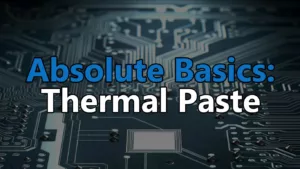If you’re trying to build the absolute best gaming PC for $800 in 2023, this is it. This beast is packing more than enough power to easily handle the most demanding games while completely maxed out in 1080p.
This build will give you a smooth, 60-144fps+ 1080p experience on maxed out settings without a problem in most games. In 1440p, it’ll consistently deliver 60fps+ with a mixture of mid-high settings – same goes for WQHD or wide 1440p.
This custom PC is loaded with AMD’s R5 5600 CPU, an RX 6600 XT, and 16GB of DDR4 RAM clocked at 3200MHz. Combined with a total of 1.25GB of SSD storage, this is the ideal balance for a very reliable 1080p-1440p gaming rig.
With that out of the way, let’s check out the build! As always, if you have any questions, ask me in the comment section below!
$800 Prebuilt Gaming PC Option
Skytech Blaze II
This prebuilt gaming PC from Skytech, the Blaze II, is a great option and similarly specced to the custom DIY build this post is all about. It’s giving you almost as much power and comes completely assembled with Windows 10 already installed. All you have to do is plug it in and turn it on!
The Best $800 Gaming PC Build

Case
Cooler Master MasterBox Q300L
The Q300L is a good ATX option with great airflow options. It comes with a single 120mm fan.

Motherboard
MSI B550 Gaming (GEN3)
MSI has a reputation for making great motherboards and this 3rd gen iteration of their Gaming board is a solid one. Featuring 6 SATA expansion ports, 1x M.2 slot, 6 USB ports, and integrated 5.1 audio, this board is loaded with everything this build needs.

CPU
AMD R5 5600
The R5 5600 is a budget-beast that completely obliterates past generations. Featuring 6 cores and 12 threads clocked up to 4.4GHz, this CPU can handle practically anything you throw at it – especially games. Supports up to 3200MHz DDR4 RAM.
Comes with a CPU cooler

GPU
MSI RX 6600 XT MECH 2X 8G
The 8GB GDDR6 RX 6600 XT is a monster when it comes to a mid-tier GPU. 1080p gaming? No problem. 1440p gaming? Not an issue.

RAM
Corsair Vengeance LPX 16GB 3200MHz
2x 8GB sticks of C15 DDR4 RAM clocked at 3200MHz.

PSU
Thermaltake Smart BX1 650W
A good budget-oriented power supply with an 80+ Bronze rating and 650W of deliverable power. The downside is it’s non-modular.

Storage
PNY CS900 240GB (Boot Drive)
A reliable 240GB SSD meant to be used as your boot drive, AKA where you’ll install Windows and other critical programs.

Storage
PNY CS900 1TB (Main Drive)
This 1TB SSD is meant to be your main storage drive, where you’ll be installing your games and saving your memes.
You're possibly thinking that you're going to need a whole workshop full of tools to build a PC... But, fortunately, you really only need a screwdriver.
To build a PC, you'll require 1 tool, a #2 Phillips screwdriver. However, there are a couple of other items that might help make the build go a little smoother.
- #2 Phillips Screwdriver
- Almost everyone will have a #2 sized Phillips screwdriver kicking around. But, if not, you can pick one up for less than $10. - Anti-static wristband
- This will ground you and prevent any electrical arcs that could damage components - Small flashlight
- Because it's nice to be able to see what you're doing
How To Build Your PC – Simplified Steps
- Install your power supply into your case
- Seat your CPU in your motherboard – make sure to close the retention bracket
- Mount your RAM – make sure they click!
- Mount your CPU cooler – Don’t forget thermal paste
- Install your motherboard’s rear I/O plate into your case’s rear I/O slot – it snaps in from the inside
- Mount the motherboard in the case (get your i/o ports through and use the middle standoff as a guide)
- Mount your graphics card onto your motherboard’s top PCIe x16 slot
- Mount and connect all storage drives
- Plug all power and data cables in where they’re required (storage, case, motherboard, graphics card, etc)
- Ensure that your power supply is turned on and press your “Power on” button
- Install your Operation System
- Install and update ALL drivers
It's often easier to watch someone else do it first. LinusTechTips has always made some of the best content on Youtube and also has one of the most comprehensive PC build walkthroughs that exist.
Complete Build Breakdown
It’s been true for years that the $800 price point offers the best balance between price and performance. This build is definitely no exception and it’s going to blow your mind. The sheer power that $800 can get out of a budget build these days is just crazy.
In graphically demanding AAA titles, you can expect this build to put out a consistent 60-144fps+ on on maxed out settings in 1080p. Or, in 1440p, this build could easily handle a mix of mid-high settings while pushing 60fps+. Depending on the game, 4K wouldn’t be a problem either, but it’ll struggle with more graphically demanding games on settings higher than medium.
Case: The MasterBox QL300 from Cooler Master is always a great choice for any build. It’s affordable, has plenty of room inside, offers great options for fan mount locations, and good cable management features. The one drawback is that it only comes with a single 120mm fan. Ideally, you want at least 2 fans, 1 for intaking air and 1 for exhausting it.
However, 120mm fans are relatively cheap and you can typically pick up one of the best, the Be quiet! Pure Wings 2, for about $10.
As the case is the most subjective part of a build, I would suggest taking a look at some other options. There might be one you prefer the looks of, or the arrangement of the ports/buttons. If you’re unsure if a case you’ve found would work well, just ask me in the comments and I’ll let you know!
CPU & Cooler: AMD’s R5 5600 is an absolute beast when it comes to what’s supposed to be a mid-tier CPU. This 6 core 12 thread, 4.4GHz monster, has enough power to easily handle any game you throw at it without a stutter. It’s perfectly situated to offer a build like this incredible power for a great price. For less than $150, it’s simply unbeatable.
While it does come with a CPU cooler, AMD’s Wraith Stealth, upgrading it would be something to consider. It’s not that the Wraith Stealth performs poorly, but even more budget-tier aftermarket coolers can outperform it.
Note: Yes, the R5 7600 just released, but loading it into this build would mean that we could no longer fit an RX 6600 XT into the budget. As the 5600 is more than powerful enough to handle 99% of current and upcoming games in 2023, unlocking more GPU power was prioritized for this build.
MOBO: MSI’s B550 Gaming (GEN3) is a good budget-oriented ATX board meant for AMD’s 4th and 5th gen Ryzen processors. It comes flashed with the appropriate BIOS to support the R5 5600 so there’s no headaches.
In terms of connectivity, it’s giving us everything we need to support this build now and in the future with further expansion. With 6 SATA ports and an M.2 slot, this board can support up to 6 drives. It also comes with 2x SATA cables which is perfect for our dual SSD setup.
Everything else you’ll need is there as well including a plethora of on-board fan headers, 6x USB ports, and integrated 5.1 audio. As with the majority of motherboards, this one does not have on-board WiFi, if you have to use WiFi you’ll need an adapter.
GPU: The 8GB RX 6600 XT is a GPU that definitely punches above its weight class. With more than enough power to easily handle both 1080p and 1440p gaming, maybe even some 4K if you’re brave enough, it’s the perfect card for this build.
MSI’s RX 6600 XT MECH 2X 8G is definitely no exception. It drops a lot of the flash and delivers a more minimalist, traditional MSI design, so you can get your hands on this beast of a GPU for way less than the average price. Fortunately, RGB lights don’t add any extra horsepower so you can expect RX 6600 XT performance from this card regardless.
RAM: In 2023, the ideal amount of RAM to run in a gaming PC is 16GB. In some instances, 32GB might even be worth considering.
With that in mind, this build is running 2x 8GB sticks of Corsair’s LPX Vengeance DDR4 3200MHz RAM. That leaves you an additional 2 DIMMS to expand your RAM if needed.
PSU: Power supplies are a critical part of a PC build, not just because it won’t turn on without one, but because they absolutely have to be of a certain quality. Without running at least an 80+ Bronze rated supply, you run a higher risk of critical failure which could lead to damaged hardware. Power supplies below the 80+ Bronze rating just aren’t meant for the high-demand that gaming requires.
With that in mind, this build is equipped with a 650W 80+ Bronze PSU from Thermaltake. While it’s non-modular and that’s a drawback, it includes all of the cables you’ll need for this build and then some.
If you don’t mind investing a bit more into your PSU for more peace of mind and cleaner cable management, I would strongly suggest the fully modular EVGA 650 GQ instead. It’s an 80+ Gold rated supply and fully modular means you only attach the cables you’re using while allows for cleaner cable management.
Storage: When it comes to storage, there’s often a lot that’s overlooked. One of the most basic things is splitting your OS and other critical programs up from your games by using individual drives. Now, I know, you might be thinking, “couldn’t I just build partitions on one big drive?” and while you could, if that drive fails you lose everything. But, with seperate drives, you have a chance to mitigate some damage and ultimately some headaches.
It’s not that the drives will fail in the foreseeable future, but SSDs wear out over time – much faster than HDDs. So it’s just better to be safe than sorry and with how affordable <250GB SSDs are in 2023, it just makes sense to split the load.
With that all said, this build is running a 240GB SATA SSD as what I call the “boot drive”, or the “OS drive”, and a 1TB “main drive” SSD for your games and such. This build could ultimately support another 4 drives, 1 being M.2.
Keyboards, Mice, and Audio
Finding the right peripherals for your new gaming PC can almost be the hardest part. With so many options available from so many different brands, it can be easy to get overwhelmed, or even worse, pick something bad.
Since nobody wants bad peripheral or unecessary headaches, here’s a few items I’ve picked out to cover your peripheral choices. Or, at the very least, to help guide you in the right direction.
If you have any questions about other peripherals you’ve found, ask me in the comment section!

Keyboard
Redragon K556
A good full sized mechanical keyboard with RGB backlighting and a very attractive price point.

Mouse
Logitech G502 HERO
One of the absolute best gaming mice you could buy. The G502 is a tried and true platform that’s only been improved to where it’s at now with the HERO.

Headphones
HyperX Cloud 2
The HyperX Cloud 2 headset is undeniably one of the best you could own. They use audiophile-grade headphones with a high-quality detachable microphone.

Speakers
Logitech Z625
This 400W set of satellites with a sub is what you buy when you want to annoy your neighbors, parents, or whoever else. You won’t be disappointed.
Operating System Options
Picking out an operating system is much easier than finding peripherals. In most cases, it’s a simple choice of Windows. Not only is Windows the easiest to install and setup, but it also does most of the leg work with many of your core drivers. All PC games are immediately compatible and no extra messing around is required.
But, some people might prefer the additional features, layers of safety, open-source software, and $0 cost that a Linux-based OS provides. However, I wouldn’t suggest going the Linux route unless you have past experience with it. While it can do a lot if you know how to use it, there’s also a lot it can’t do for that same reason. As an example, a lot of games require different steps to make them work that simply aren’t required with Windows.
Ultimately, the choice is yours.

Windows
Windows 10
The most recent version of Microsoft’s operating system, Windows 10 is your best bet for across the board compatibility.

Linux
Ubuntu
Ubuntu is a great, open source operating system rooted in Linux. It’s known as one of the most user-friendly and easiest to learn.
Internet Connection Options
As mentioned above, the motherboard in this build does not come with built-in WiFi – most motherboards don’t. For that reason, if you have to or want to use WiFi, you’ll need an adapter.
When it comes to adapters, you have 2 choices. Internal, or external. Once upon a time, internal was the undeniable best way to go due to performance. But, with advances in WiFi tech, external options can be just as good if not better in some instances.
If you want a suggestion, go external.

Internal WiFi Adapter
TP-Link Archer T6E
The Archer T6E is an awesome internally mounted AC1300 WiFi router. It has 2 antennas for ensured connectivity and can operate on both the 2.4 and 5Ghz bands.

External WiFi Adapter
Netgear A6210-100PAS
Netgear makes some of the absolute best WiFi-related hardware, this particular USB adapter is absolute no exception. Although it’s more on the pricey side of adapters, it’s worth the extra cost for the extra quality – trust me.
Conclusion
Building a gaming PC for $800 puts you in the perfect price point for the best price vs performance. It’s often considered the standard for a mid-range PC and the power you get is insurmountably higher than top-tier consoles.
By combining the R5 5600, an RX 6600 XT, and 16GB of RAM, you’re getting a 1080p/1440p powerhouse that’s going to blow your mind. Not only that, but this build will stand the test of time and won’t require any significant upgrades for at least a couple of years.
Of course, there are some upgrades that could be made to further improve its overall performance. Upgrading the CPU cooler would enable higher clock speeds and lower temps. Adding an additional 16GB of RAM could also be something to consider, especially if you play a lot of big open world games.
As always, if you have any questions about the builds or parts on this page, feel free to leave a comment below!
Browse Our Other Builds
If this build wasn’t exactly what you were looking for, we’ll definitely have something else in our lineup that you’ll prefer!










I was trying to buy a computer last year but the price was too high for way less power than a ps5 which i got instead. does this have more power than a ps5?
Prices have definitely been pretty crazy lately, but they’re coming down rapidly! This PC is right on par with a PS5 in terms of performance, but a lot more versatile of course. To beat a PS5, you’d need at least an RX 6700 XT.
Hope that helps!